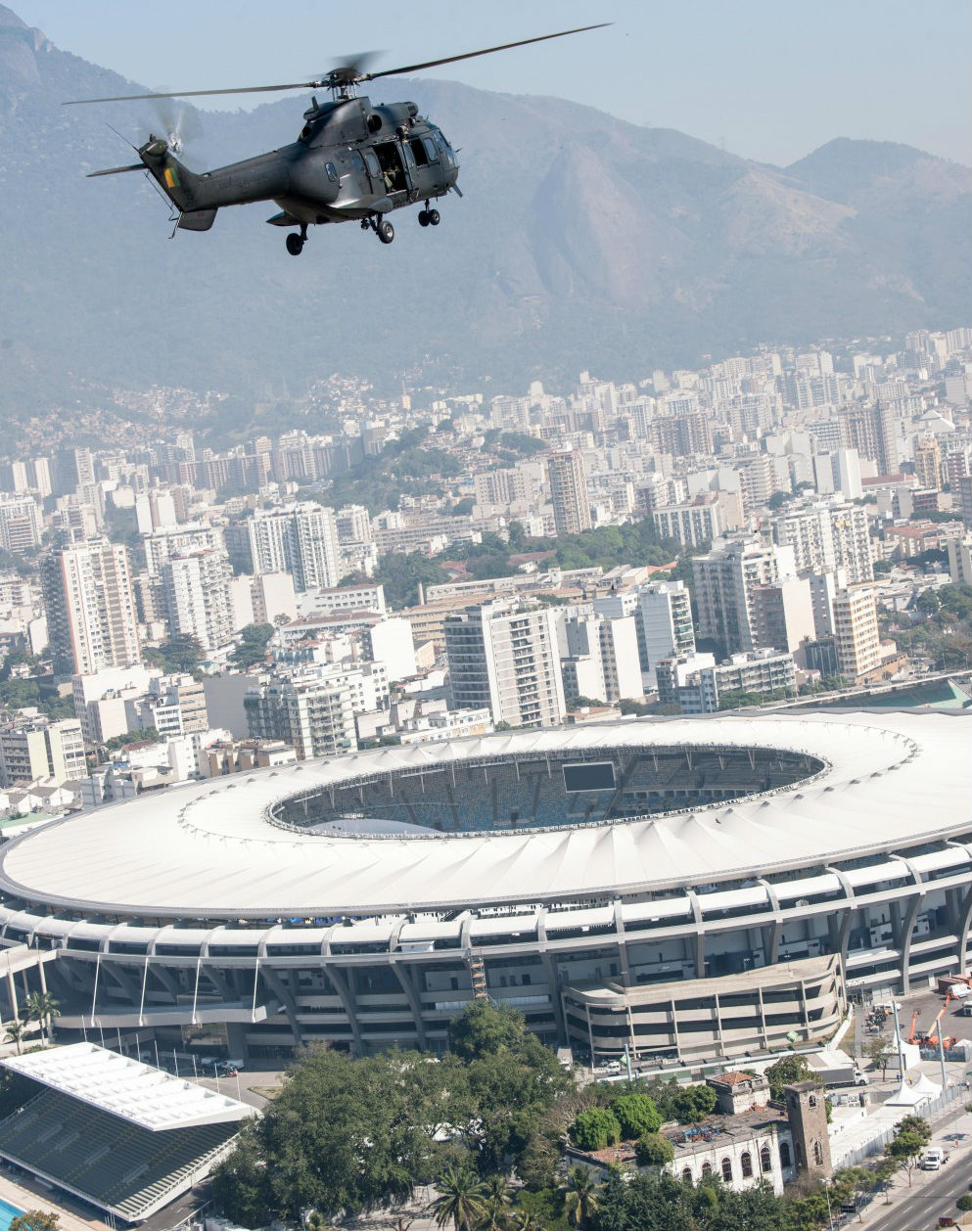The results of a survey conducted by Helibras with the operators of around 90 Airbus helicopters deployed during the 2016 Rio Olympics and Paralympics showed that the fleet achieved 98 percent availability from the start of preparation for the Games in July, to the closure of the competitions on Sept. 18, 2016.
The aircraft were used for security, defense, and as camera platforms.
Of the helicopters used in these missions, 35 units were used by the Navy, Army and Air Force in Rio de Janeiro and in the five Brazilian cities that hosted the football games. The helicopters included the H225M, AS350, Fennec, Panther and Cougar.
To ensure availability, Helibras worked intensively with its teams to deliver newly modernized Fennec and Panther K2 models and the H225Ms, which were undergoing inspection.

“The company’s readiness plan began in July with these activities, but during the Games themselves we were able to count on the involvement of 22 professionals, including technicians and specialists in logistics and support. They were on duty seven days a week, providing immediate assistance at any time or on any day, to meet the demands of the operators during the Games,” explains Dominique Andreani, vice president of business and services.
The company also organized an additional stock of spare parts for the Army at the Afonsos Air Base, valued at approximately 1.5 million reais. For technical support, Helibras assistants were on duty from 8 a.m. to 10 p.m. every day at the Puma Squadron base of the Brazilian Air Force, together with professionals who remained on standby on weekends to serve customers.
The aircraft themselves were available for search-and-rescue (SAR) and search-and-rescue/nuclear, biological and chemical (NBC) alert mission, with crews on call 24 hours a day.
For NBC missions, officers were trained before the start of the Games and were fitted with special suits for protection against nuclear, chemical and biological agents.
“With its high load capacity and internal space, the H225M was the only helicopter able to perform this type of mission. No such event actually occurred, but the configuration established in the H225M for air ambulance evacuation meant that transport could be provided for two encapsulated victims, life support equipment and a medical team of five military staff, duly protected and ready to assist patients in flight,” said first lieutenant Ramatis Garcia Bozz, social media officer of the 3rd/8th Aviation Group.
The integration of the armed forces and law enforcement agencies was highlighted by the Brazilian Minister of Defense, Raul Jungmann, in his communication about the final evaluation of the activities carried out during the Games.
The Military Police of Rio de Janeiro State deployed its first twin-engine helicopter, an EC145 equipped with the brand new C2i intelligence, command and control system.
“We certainly took a major step forward with the EC145 in air imaging missions using the helicopter’s FLIR. This tool enabled us to carry out more precise operations and to provide greater security to the teams on the ground and for the general population,” said Col Luiz Sergio Cosendey Perlingeiro, commander of the GAM Air Group of the Rio de Janeiro Military Police.
In addition to the EC145, the corporation operated Ecureuil helicopters, which were also used for mission imaging, patrols, transporting troops, air ambulance services, firefighting and general rescue operations.
The aircraft were used to patrol the perimeter of the area around the Maracanã stadium, which hosted the opening and closing ceremonies, for reconnaissance of the main thoroughfares of the city, and to transport troops for rapid arrival at locations with difficult access.
“The city’s geography and its urban growth profile make the operating scenarios a challenge under any conditions,” said the colonel.
Also among the twin-engined rotorcraft, an EC135 belonging to the Internal Revenue Service was commissioned long before the Games began and patrolled the skies above central Rio, the port area, the Ministry of Foreign Affairs, the Copacabana access routes, the Olympic Village and Olympic Park, and the sports complex in Barra da Tijuca, in support of the Brazilian Intelligence Agency’s risk assessment report on the Games.
The helicopter also focused attention on the access routes, abandoned buildings and points of the Rio Port area (Porto Novo) and the Museum of Tomorrow, to support the broadcasting of the Games on the giant screens provided at these sites.
“Helibras is working hard to make customer needs its top priority, and during these two major events, we discovered that it is possible to respond to all our customers with speed and precision. We will take this experience, and the experience of the World Cup in 2014, into our daily activities,” said Helibras president Richard Marelli.









